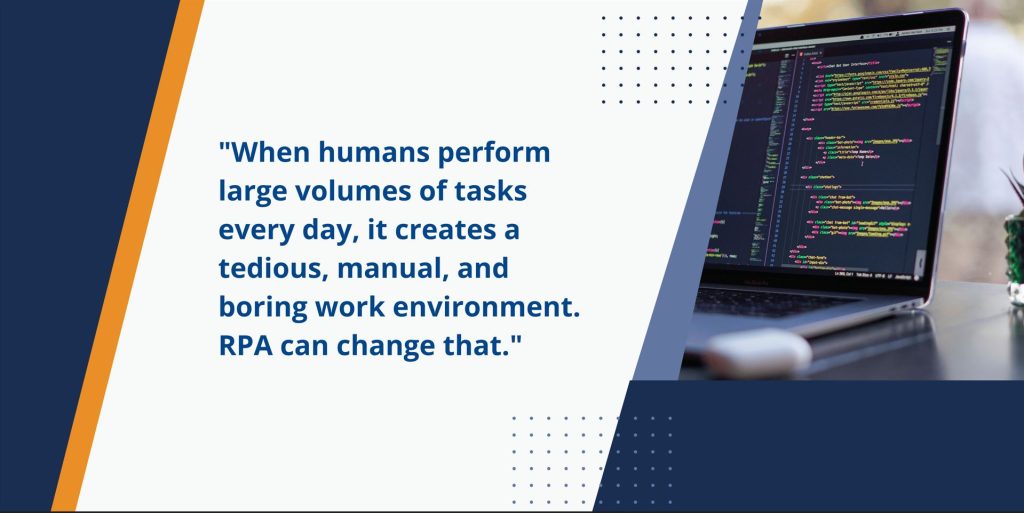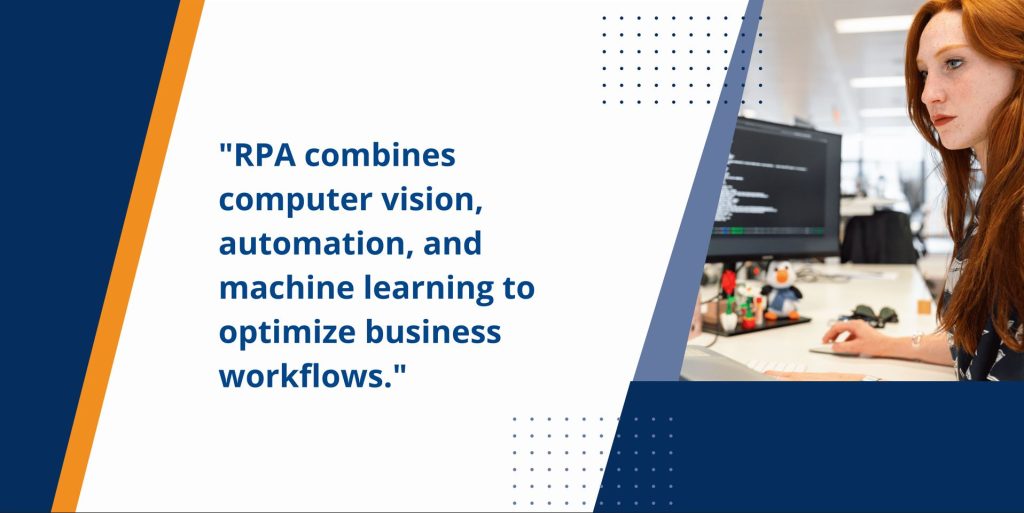Robotic process automation services involve developing RPA bots and ecosystems. RPA combines computer vision, automation and machine learning to optimize business workflows.
This, in turn, aids productivity, efficiency, and employee satisfaction.
But then, what is robotic process automation? In this guide, we’ll explain RPA in simple and non-technical terms. We aim to figure out what happens when you add RPA systems to your business.
RPA Bots are Not Physical or Mechanical Robots
RPA implementation isn’t about adding any physical or mechanical robots to your organization. So you can’t “see” your RPA bots. Instead, they are better called software solutions.
You will define rules that tell these bots how to act. They mimic human interactions with computers to carry out tasks repeatedly, error-free, and at breathtaking speed and volume. Some such interactions include:
- Understanding what’s on screen
- Moving files from one place to the next
- Inserting data
- Filling forms
- Copy-paste information
- Navigate systems
- Go through the right keystrokes
- Identify and extract data
Advanced robots may even perform cognitive processes like interpreting text, engaging in predictable tasks, analyzing unstructured data, and applying advanced machine learning models to generate insights from datasets. All these tasks can be thought of as “low-hanging fruit”. When employees have to perform large volumes of such tasks every day, it creates a tedious, manual, and boring work environment. That’s notwithstanding the loss in productivity and the risk of mistakes.
By taking these tasks off the hands of your employees, employees can spend their time delivering higher value to your business. So, these robots handle these tasks faster, repeatedly, and consistently without ever taking a break or making any errors.

Which business processes benefit from robotic process automation services?
At first, you may think that all time-consuming tasks qualify for RPA. However, RPA automates tasks with a high volume of repetitive and predictable work. Hence, any tasks for which you can make instructions (or rules) to predict every step are great areas for automation. Therefore, every process must pass the checklist below to qualify for RPA implementation:
- The process must be rule-based
- It can have a pre-set trigger
- The process must be repeated regularly
- It must have a specific input and output
- It must have sufficient volume
All these examples clearly show how RPA can help improve productivity across sectors. RPA systems can apply to business processes in retail, marketing, customer service, HR, accounting, legal, finance, analysis, sales, and more. No matter the industry, RPA can handle the repeatable aspects. So your team can focus on more meaningful tasks involving creating, collaborating, interacting, and innovating. All these advance your organization’s digital transformation efforts.

Conclusion
Robotic process automation is all about using technologies to build bots that mimic human behaviors and can handle mind-numbing, high-volume repetitive tasks. Invest in robotic process automation services, and you can build a virtual workforce that supports your human team to chase after game-changing opportunities for your organization. The result is an optimized business environment that is focused on successfully growing your bottom line.
